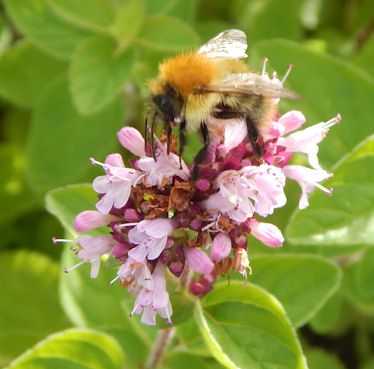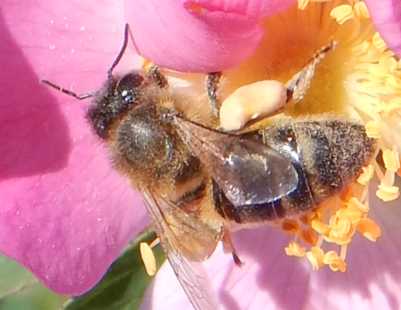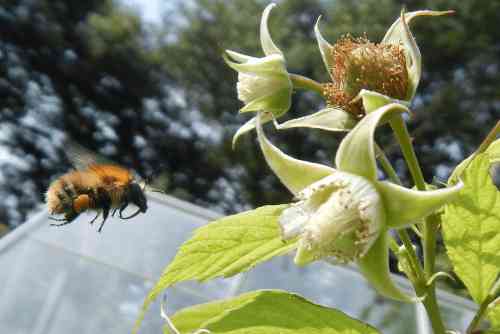Do Bees Have Toes?
Question:
Do bees have toes?
The short answer is:
No, bees have tarsal claws rather than toes. The claws help the bee grip surfaces, have taste sensors, and aid communication.
Read on for further information!
Do Bees Have Toes?
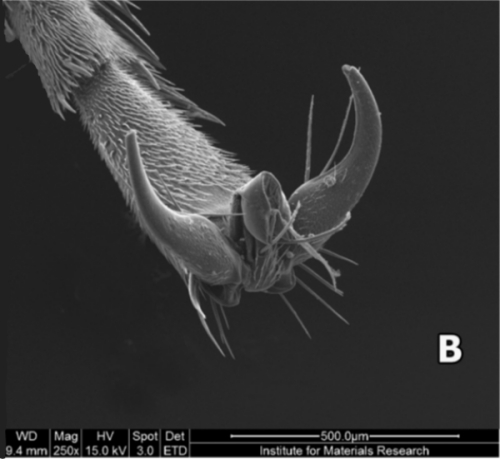 Under a microscope, 2 claws can be seen at the end of the foot (pretarsus).
Under a microscope, 2 claws can be seen at the end of the foot (pretarsus).Image courtesy of Asperges, Michel & D’Haen, Jan & Lambrichts, Ivo & Van Belleghem, Frank. (2017). The pretarsus of the honeybee. Belgian Journal of Zoology. 147. 10.26496/bjz.2017.8. Creative Commons License 3.
Elsewhere on this website, I address the question ‘do bees have knees?’, and the answer to this question is ‘yes’, so the question about whether bees have toes is a perfectly valid and logical one.
There are in fact a number of other parts of the leg that bees have in common with humans, including:
Femur - A segment of the leg called a femur, which is the thigh.
Tibia - A tibia, which in bees performs the same sort of function as a human shin or upper arm.
Tarsus - In bees, these represent the functional equivalent of hands and feet in humans.
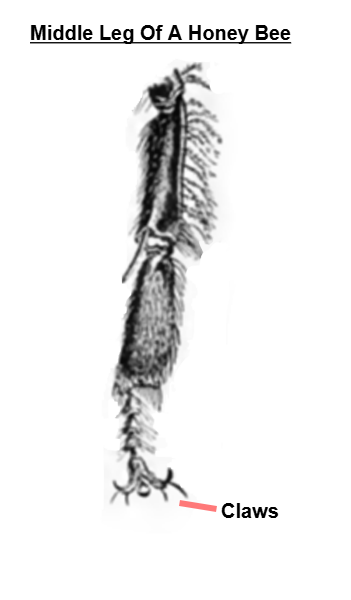
Humans have toes at the end of the feet (tarsus). The scientific name for toes is 'phalanges'.
Bees do not have phalanges. In contrast, bees have claws.
These tarsal claws perform a variety of functions.
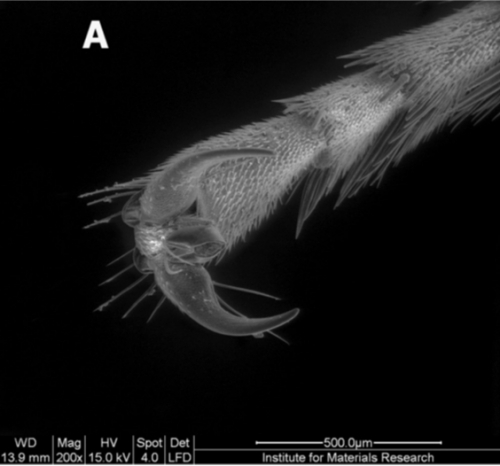 Claws at the end of the foot (pretarsus) of a honey bee.
Claws at the end of the foot (pretarsus) of a honey bee.Image courtesy of Asperges, Michel & D’Haen, Jan & Lambrichts, Ivo & Van Belleghem, Frank. (2017). The pretarsus of the honeybee. Belgian Journal of Zoology. 147. 10.26496/bjz.2017.8. Creative Commons License 3.
The functions of the tarsal claws of bees
1. Gripping surfaces
Firstly, the fine hooks at the ends of a bee leg help the insect to grip surfaces, whether vertically or hanging upside down on the stem or petal of a flower.
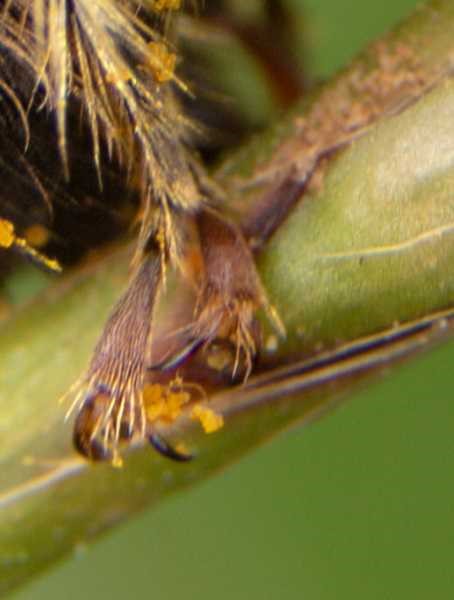 clawed foot of a bee (Eucera species)
clawed foot of a bee (Eucera species)2. Taste
However, surface grip is not the only function of the tarsal
claws. The tarsal claws on the front
legs feature sensory hairs that enable a bee to detect sugary and salty tastes. You can read more about this subject on my
page how do bees taste?
3. Communication via pheromones
Tarsal claws also help to distribute a chemical, actually a
type of communication pheromone, which it is believed, is released by the
tarsal glands a little further up the leg. although other scientists believe it
is released from a tendon gland.
Nevertheless, this pheromone which is sometimes called the “footprint pheromone’ or “trail pheromone”, is deposited on surfaces from a pad-like projection between the tarsal claws called an arolium.
In honey bees, these pheromones are believed to be important for communicating in various scenarios, by queens, drones and workers.
For example, worker honey bees use it to mark the entrance of a bee hive or nest, almost like an ‘enter here’ sign. These pheromones may also be used to mark the location of a forage site.
Forager bumble bees leave footprints as repellent scent marks on depleted flowers (Stout et al. 1998; Goulson et al. 2000).
Resources
- Asperges, Michel & D’Haen, Jan & Lambrichts, Ivo & Van Belleghem, Frank. (2017). The pretarsus of the honeybee. Belgian Journal of Zoology. 147. 10.26496/bjz.2017.8.
- Butler, C.G., D. J. C. Fletcher and D. Watler 1969. Nest-entrance marking with pheromones by the honeybee - Apis mellifera L., and by a wasp, Vespula vulgaris L. Anim. Behav. 17: 142-147.
- Goulson D, Stout JC, Langley J, Hughes WOH (2000) Identity and function of scent marks deposited by foraging bumblebees. J Chem Ecol 26:2897–2911
- Stefan Jarau · Michael Hrncir · Ronaldo Zucchi ·Friedrich G. Barth Morphology and structure of the tarsal glandsof the stingless bee Melipona seminigra, (2005) Naturwissenschaften, 92:147–150DOI 10.1007/s00114-004-0601-1
If you found this page helpful or interesting, I'd really be grateful if you would share it with others - if not this page, perhaps another, such as Gardening For Bees.
Thank you so much :) .
